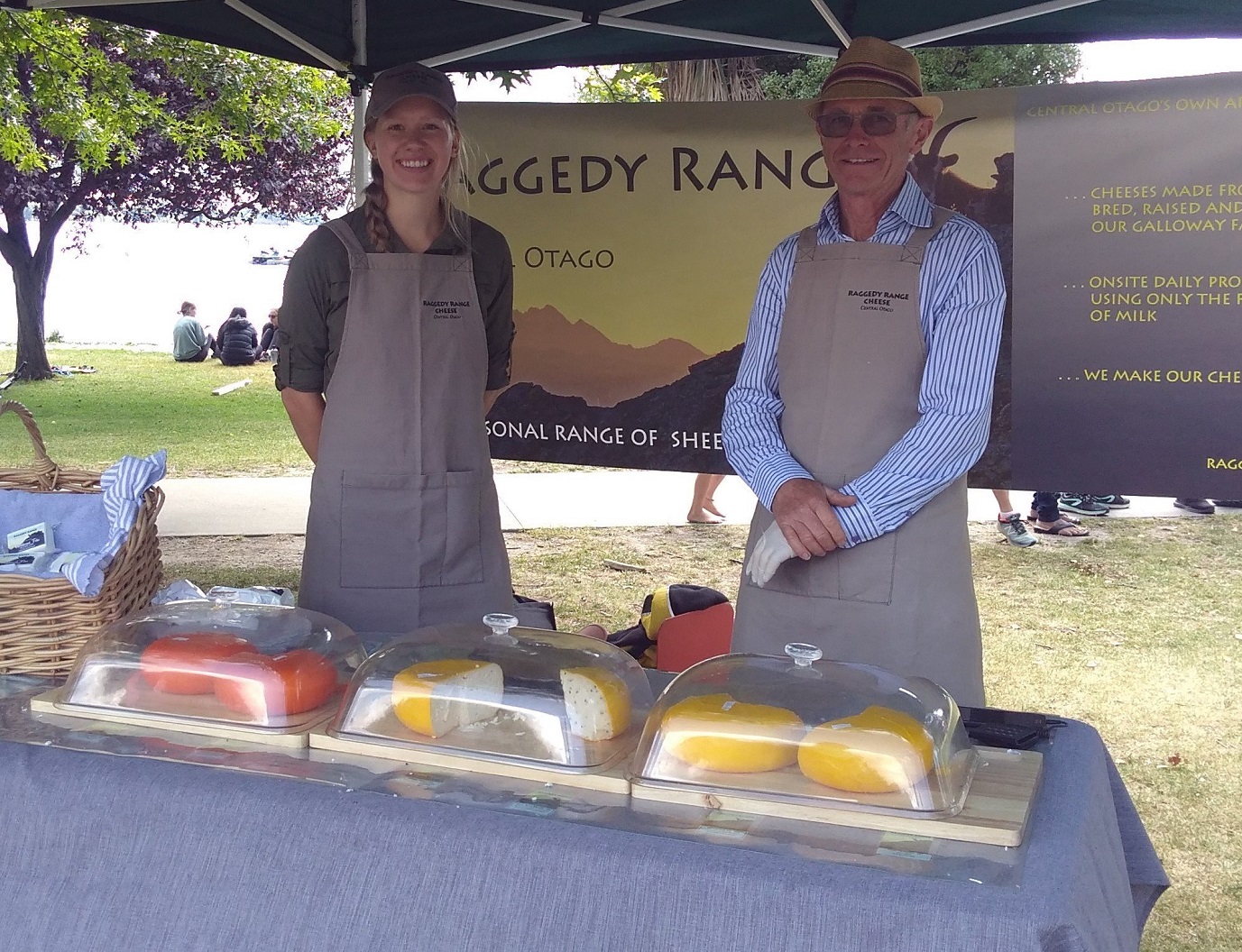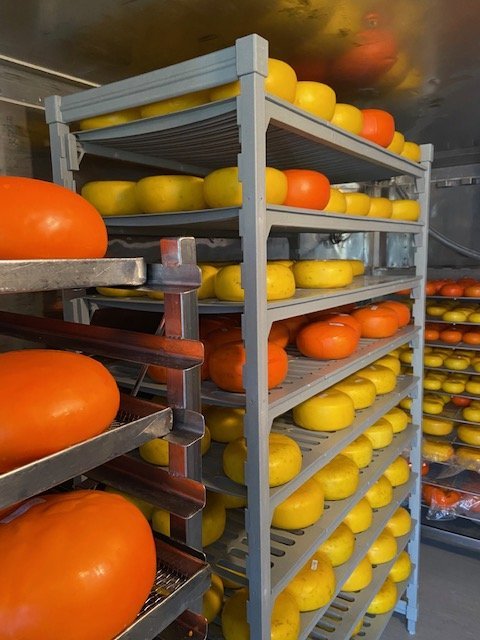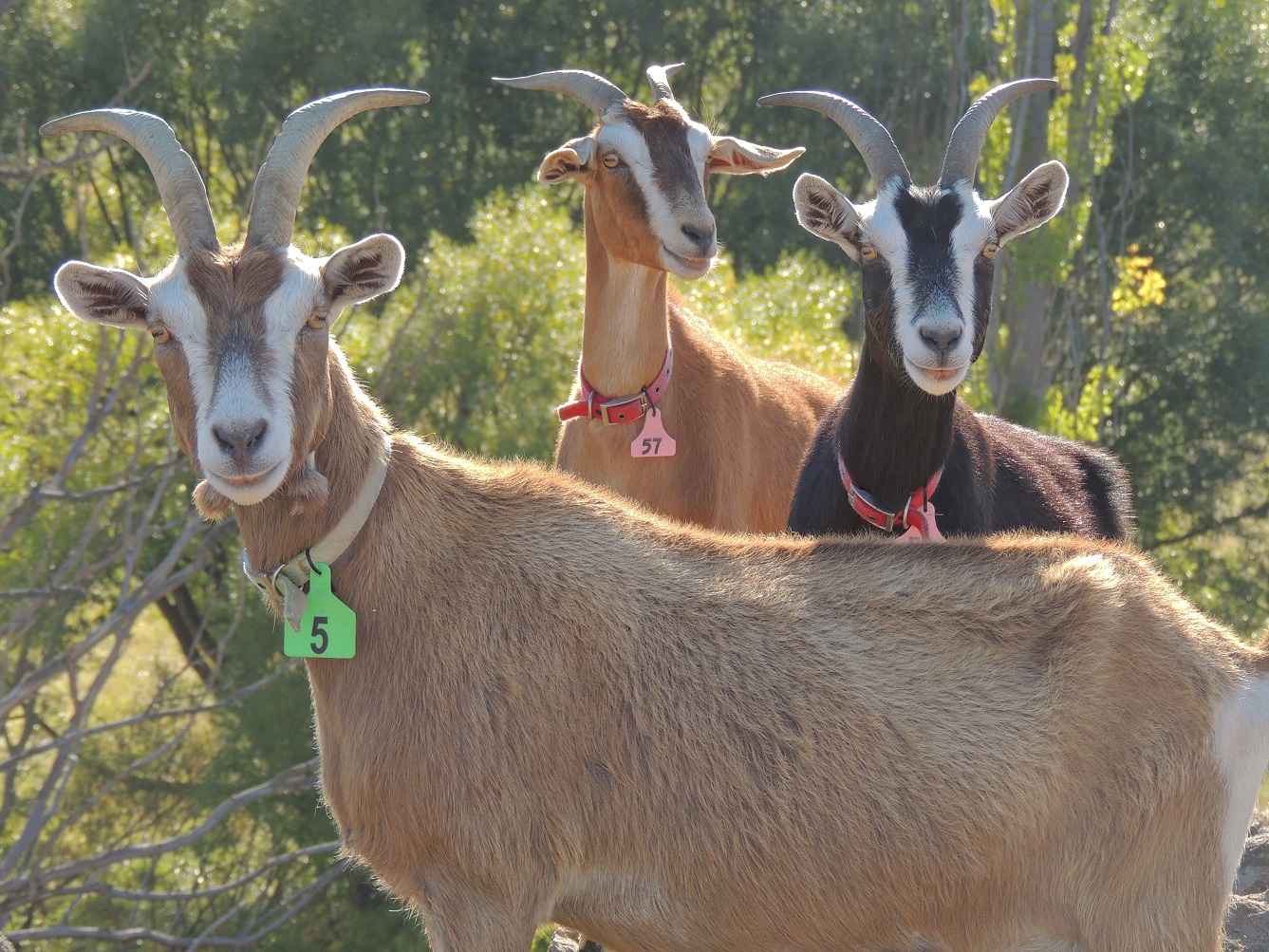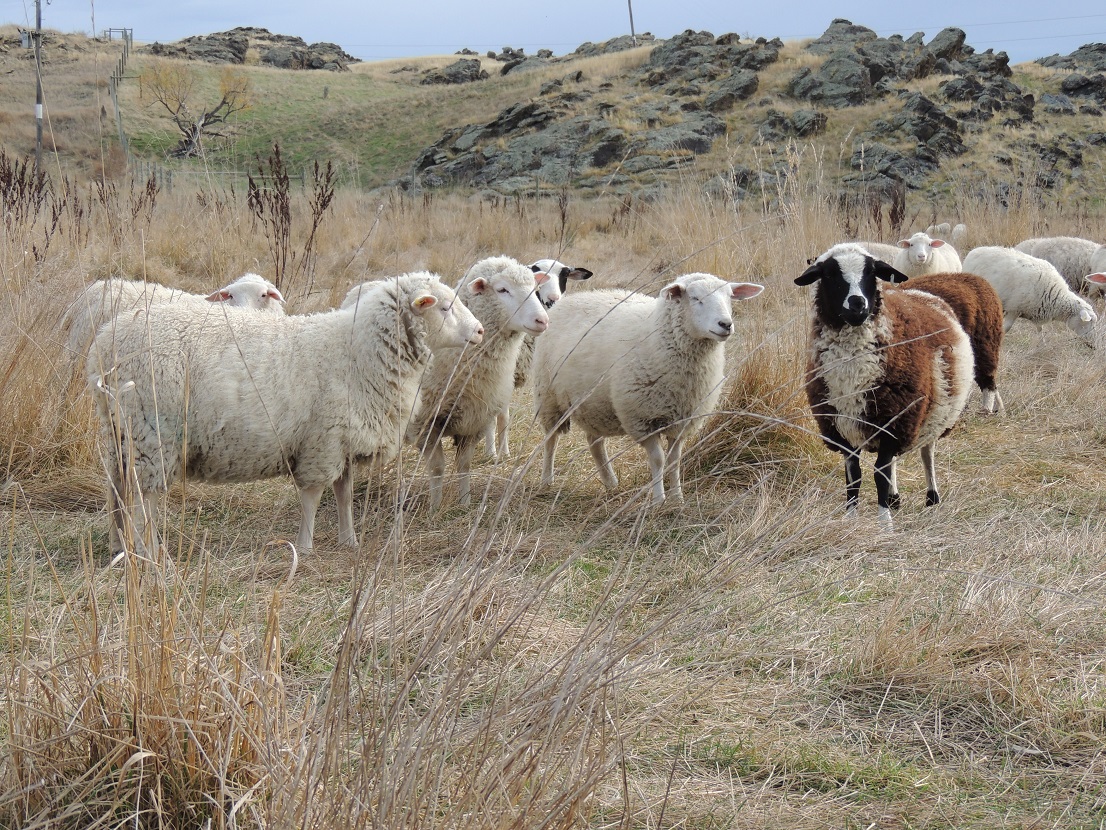
From "breeding to market" is how Nick Loughnan and his family like to view their cheesemaking endeavours.
Goats and sheep roam their farm at the eastern foothills of the Raggedy Range, in Galloway, near Alexandra, before being milked on farm once a day. Their milk then only travels a few metres to where his wife Faith Gray turns it into a variety of cheeses, named after the range.
As Loughnan likes to say, it started from small beginnings with one house goat and Gray experimenting with home-made feta.
"Faith is an experimental person, she loves trying new things. So she made some feta and took it out to friends for dinner and they raved about it."
So, with a bit of encouragement from friends, the idea of making cheese commercially was planted.
"We thought we have the land, so it’ll be easy enough, we just have to get the animals. If we knew then, what we know now ... "
A farmer on and off for most of his life - he did a 12-year stint as a teacher - Loughnan admits there was a lot more to setting up production than they ever thought.
"It was a very steep learning curve. There was all the compliance to tackle."
With the idea of being a small-scale producer they decided to try something different and started out with dairy goats, a mixture of Toggenburg, Nubian and Saanen.
As goats do not soil when being milked, it meant they avoided a costly effluent pond (that the experienced consent officer was about to direct them to build) and it only took about a week for the goats to learn the milking routine.

Their son Bryce returned home to help out and started out by training to make cheese and experimenting with what cultures and recipes would work, while Loughnan got started on the dairy and cheesery.
He found the perfect shed for the job - a unwanted ski shelter from a Canterbury skifield. It even unbolted into parts to be trucked to the farm and rebolted back together on site.
"It’s New Zealand’s only cheesery that is avalanche proof and has a snow loading on it. It works really well."
Gray designed the layout for the cheesery allowing for the stock to enter at one end and into the milking section with the cheese made at the other end. It is important for them that the milk is not transported far as it can aerate the milk and change its flavour.
"You can’t get fresher than that."
It also gives them control over the process from start to finish.
"It is very satisfying, but you also have no one else to blame if it goes wrong than yourself."
In 2012 they saw potential in sheep cheese so decided to give milking sheep a go. From their own flock of sheep they selected ewes with good udders and put them to milking rams (East Freisian, Awassi and Dorper Cross) and now milk up to 70 sheep. Three years ago they introduced Lacaune genetics to the mix.
"Lacaune, is a French milking sheep industry standard, and we will have to hurry up and wait two more years now to see how the progeny of those rams measure up."
While Bryce started out making cheese, that job had now gone to Gray, while he took over running the 80ha farm the family bought in 1994. Loughnan pitches in wherever needed and is the "face" of the business fronting the market stalls and festivals around Central Otago where the cheese is mostly sold. They also supply some restaurants.

"It’s a big commitment but it’s satisfying. I get the glamour job at the market meeting people who like to buy cheese."
People like their cheese not just for its taste but also because they like to support small local businesses. He admits it is not a cheap product but as a small producer they cannot make it any cheaper.
"Being a small operator works well for us in some ways, but in some ways it works against us, there’s no economies of scale."
That hit home in the toughest of ways during Covid when a chiller failure saw them lose thousands of dollars worth of cheese. A contact breaker switch worth just a few dollars failed.
"It was a bad one, a real knock. It was worse than Covid. It was such a small, cheap part."
They had judged the cost of insurance cover for such an unlikely failure to be too costly so had to wear the loss.
"We had some happy pigs out of it and the pork was good."
The chiller was home to their reserve of ageing cheeses so it was also a huge loss on that front. But as it was mid-season they were able to keep up production on their soft cheeses and had just enough hard cheese remaining to get by.
"We’ve caught up now. Them’s the breaks."
In the beginning it took a while to get things up and running as cheese needs time to age, at least three months for the hard cheeses while the sheep cheeses are "superb" at two years old.
"It takes time, you can’t rush."

Their sheep Fenugreek Mix and pecorino won bronze medals this year at the New Zealand Champions of Cheese Award. Loughnan is a bit reluctant to pick favourites, but admits the pecorino is one.
"Before Covid, when we had tourists from Europe, they rated it highly, which was nice and we got a medal for it."
The others are the goat camembert and the chevre which he enjoys spread on toast with sliced tomatoes and pepper.
"It’s also really nice in desserts."
He finds the public is quite interested in their cheeses especially people who are lactose intolerant as sometimes they can tolerate goat or sheep milk cheeses better due to the milk’s proteins being easier to digest for some.
A nice bonus to the business has been the overseas tourists who found their way to their farm over the years, in particular before Covid, he says.
"It’s a funny thing when you are living an occupation - you often do not see the obvious."
Most of the tourists which have found their way to them have been French who are missing the cheeses from home.
"They find their way to our door and stay a week or four. They’ve been a joy to have on the place, they’re young and have lots of energy."
They are often professionals such as an Airbus engineer, a nuclear physicist and a tax consultant who are seeking a simpler life in New Zealand.
"We really enjoy having them."

Lamb & vege stack with pesto & goat feta
This recipe celebrates quality New Zealand ingredients. Use local lamb and vegetables and a fresh local goat feta such as Raggedy Range. With only 25 minutes prep this dish is bound to please everyone.
Serves 4
3 lamb rumps
¼ cup olive oil
2 eggplants sliced in thick rounds
12 small vine tomatoes
100g feta cheese
150g basil pesto
A handful of chopped basil leaves
A pinch of salt and pepper
Pesto
1 cup well-packed basil leaves
2 cloves crushed garlic
2 Tbsp pine nuts
½ cup olive oil
2 Tbsp grated parmesan cheese
Method
Start by heating the barbecue plate or grill to hot. Brush the eggplant rounds with olive oil and season then cook for 3-4 minutes each side, brushing with olive oil when turning to avoid them drying out. Cook until soft and golden brown. Remove and cover to keep warm.
Add the tomatoes and cook, brushing with olive oil, until the skin begins to blister, and the tomatoes are soft. Remove and keep warm.
Rub lamb rumps with olive oil and season then place on the grill for 10 minutes, turning once for medium-rare lamb. Remove from the grill, cover loosely and leave to rest for 10 minutes before slicing.
Place all pesto ingredients in a small food processor and process to a rough paste. Season with salt and pepper and then stir through Parmesan cheese.
Place in a small bowl, cover well and refrigerate for up to 3 days.
To plate: Layer eggplant slices on the plate then top with lamb and 3 tomatoes. Add sliced lamb on-top of eggplant and dollop with a generous amount of pesto and sprinkle with feta. Garnish with fresh basil leaves.
Recipe: recipes.co.nz













